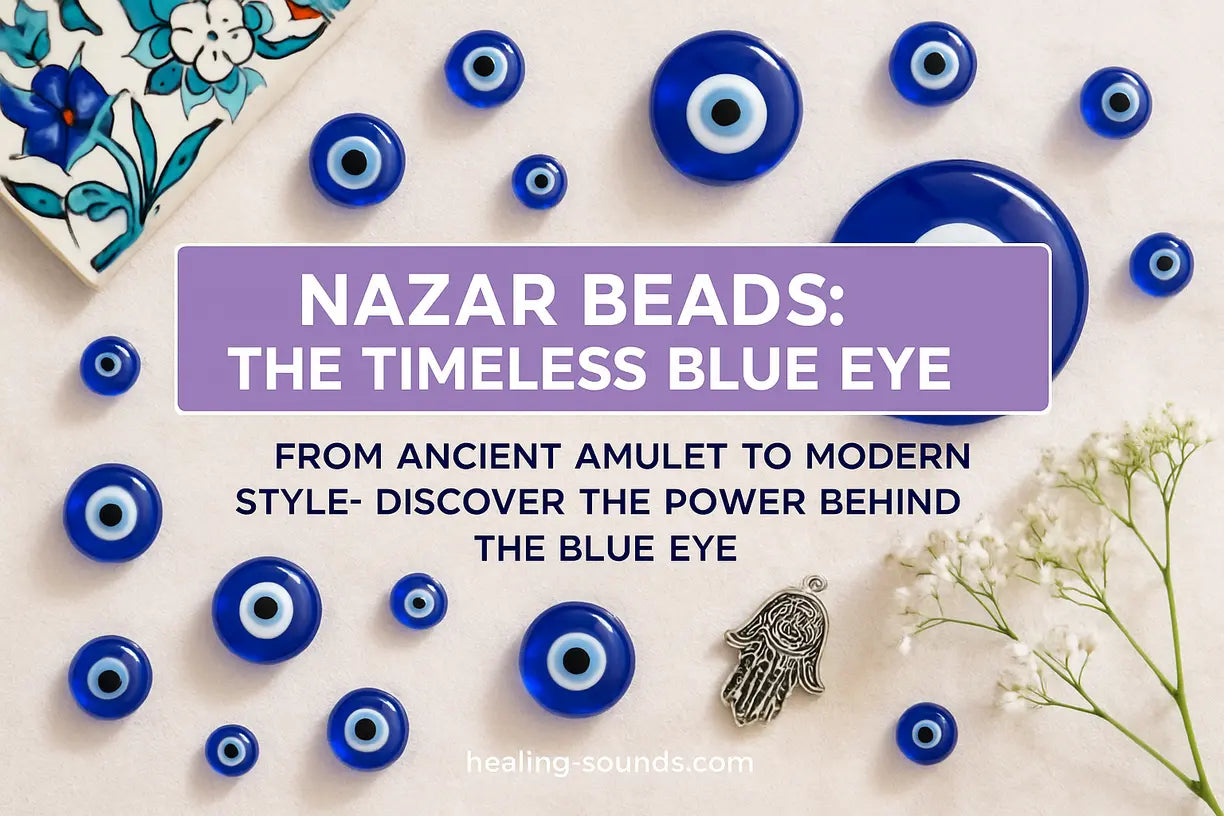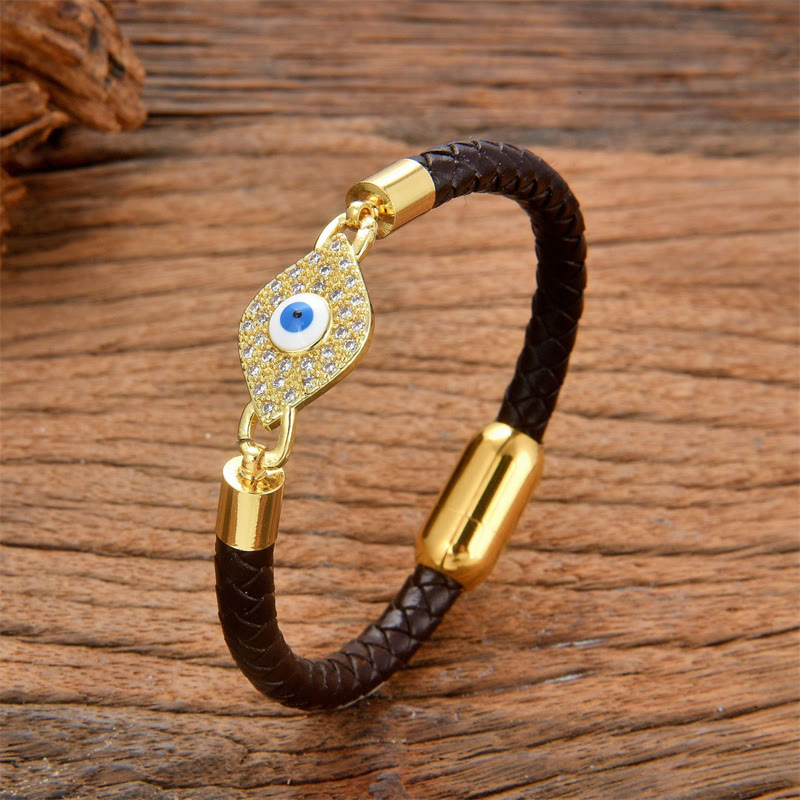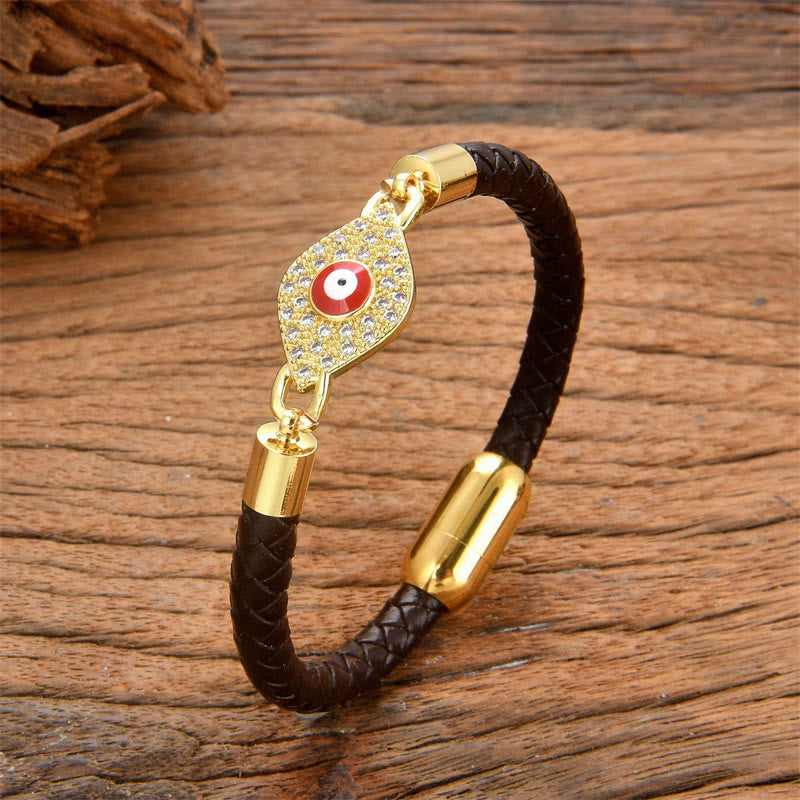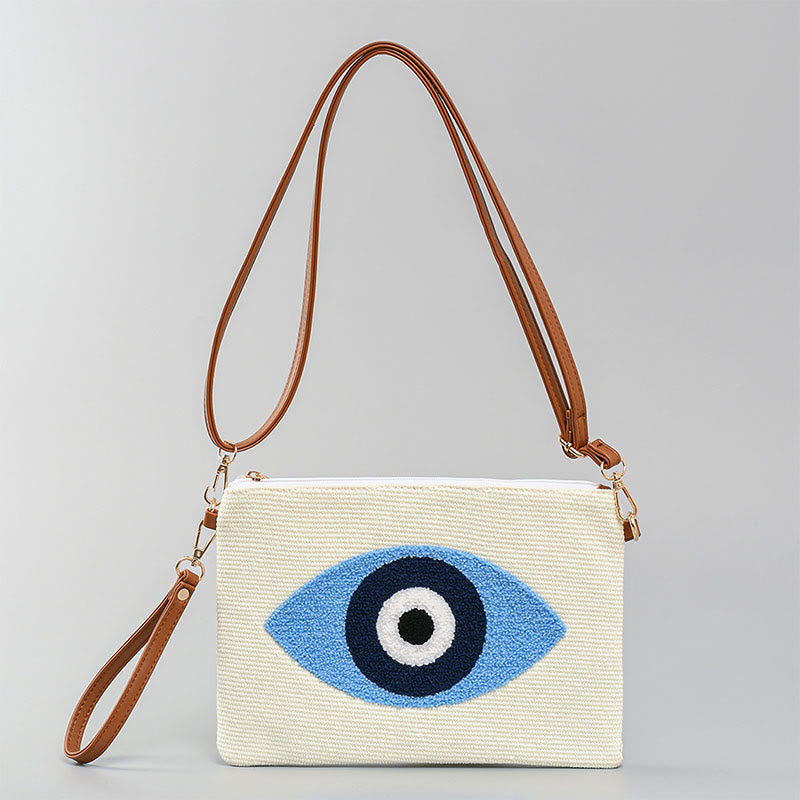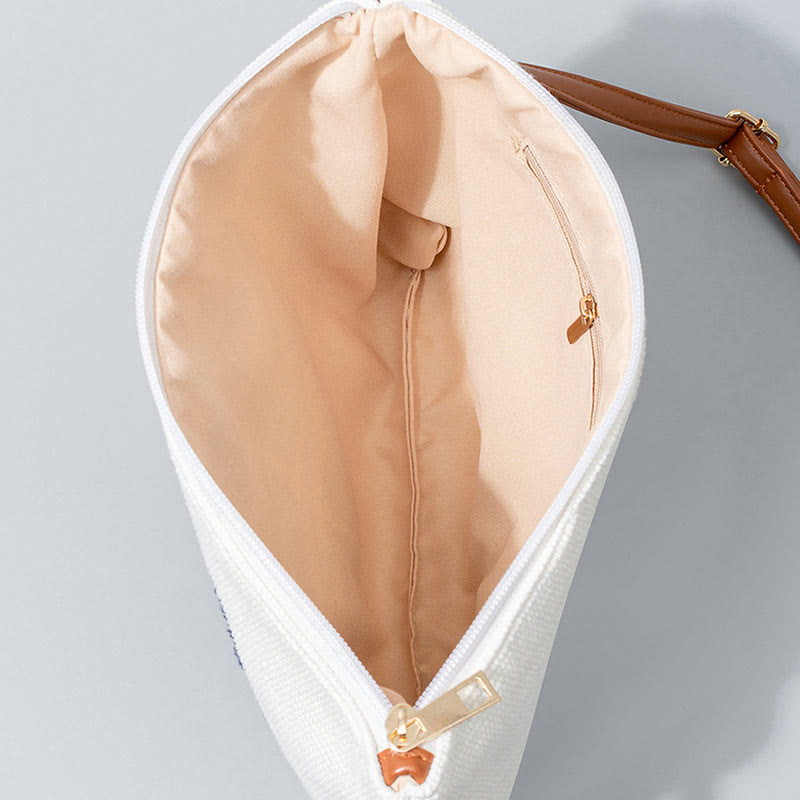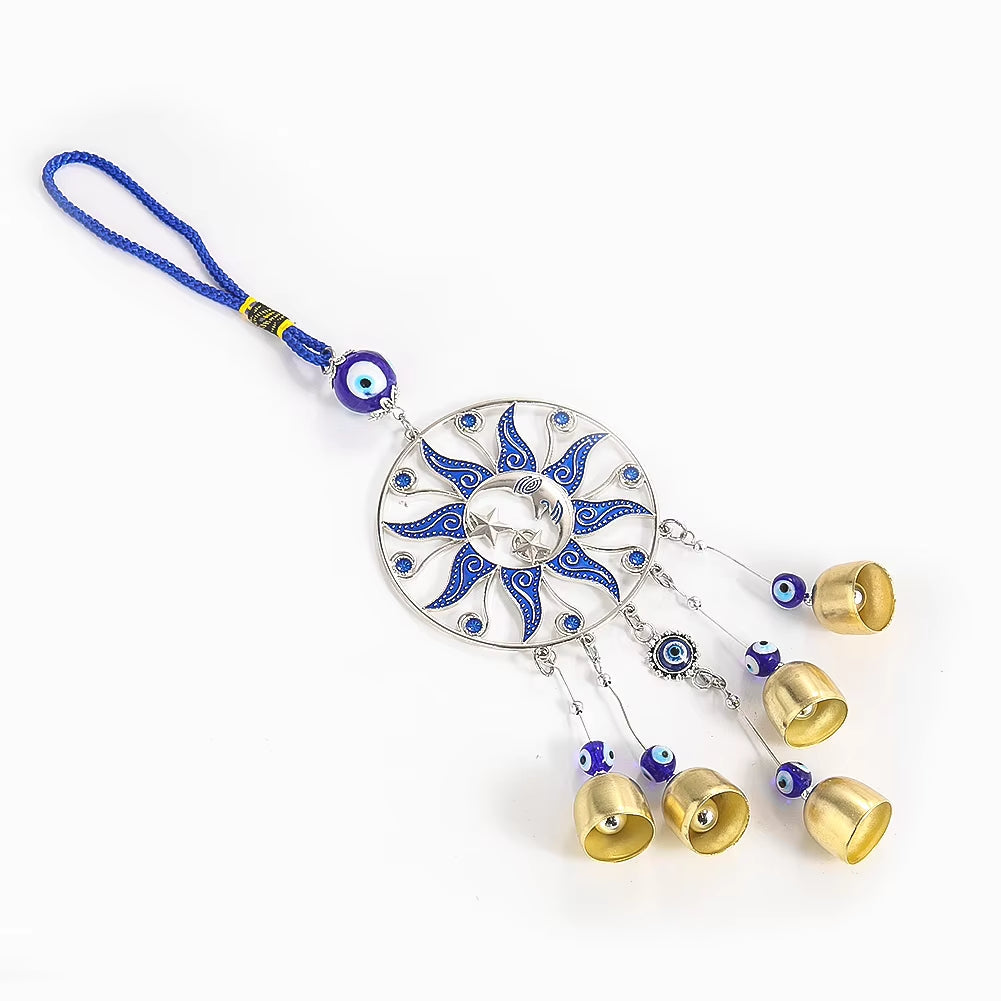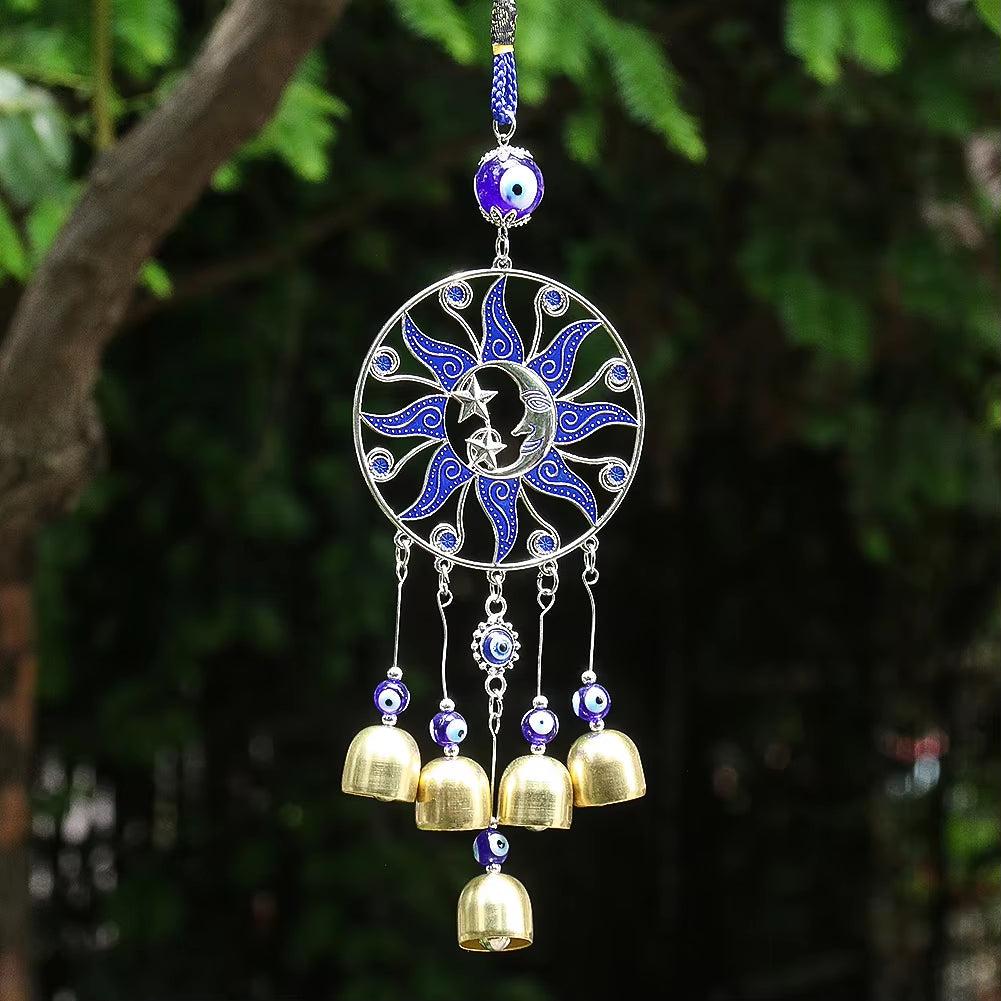Avez-vous déjà ressenti un léger malaise, le sentiment qu'une négativité invisible persistait ? Depuis des siècles, des peuples de toutes cultures cherchent des moyens de se protéger de telles influences. Plongez dans l'univers fascinant des perles nazar , ces amulettes traditionnelles à l'œil bleu, censées offrir une puissante protection. Ces symboles emblématiques sont plus que de simples ornements remarquables ; ils sont imprégnés d'histoire et d'une signification profonde. Cet article explore l'histoire fascinante des perles nazar , en explorant leurs origines, le pouvoir qui leur est attribué et comment vous pouvez accueillir leur énergie protectrice dans votre vie. Que vous soyez attiré par leur beauté, leur signification culturelle ou leur promesse de protection, vous découvrirez pourquoi ces pierres à l'œil bleu sont restées un talisman précieux pendant des générations.
Que sont les perles de Nazareth ? La signification de l'œil bleu emblématique
Au cœur de la perle nazar , souvent appelée « nazar boncuğu » en turc, se trouve une amulette en forme d'œil censée protéger du « mauvais œil ». Le mauvais œil est une croyance répandue selon laquelle un regard malveillant, souvent né de l'envie ou de la mauvaise volonté, peut apporter malheur, souffrance ou malchance à la personne visée. La perle nazar agit comme un gardien vigilant, censé absorber ou refléter cette énergie négative, neutralisant ainsi ses effets néfastes. La forme la plus reconnaissable est une perle ronde et plate en verre bleu, ornée de cercles concentriques formant un motif en forme d'œil – généralement bleu foncé, bleu clair, blanc, et parfois noir ou jaune au centre. Son but principal est la protection spirituelle , telle une sentinelle silencieuse veillant sur son porteur.
L'héritage durable : un voyage à travers l'histoire des perles de Nazareth
Le concept du mauvais œil et l'utilisation d'amulettes protectrices remontent à des millénaires, trouvant leurs racines dans l'Égypte, la Grèce et la Rome antiques. Cependant, la perle nazar en verre bleu, si particulière à notre époque, est étroitement associée à la Turquie et s'est répandue dans toute la Méditerranée, le Moyen-Orient, l'Amérique latine et au-delà. Des preuves historiques suggèrent que des perles en verre œil étaient fabriquées en Anatolie et dans la région égéenne dès le Ier millénaire avant notre ère. La tradition de fabrication de ces perles en verre bleu, notamment en Turquie, s'est transmise de génération en génération. La couleur bleue vibrante est significative, souvent associée à la divinité, à la vérité et à la protection dans de nombreuses cultures. Ces perles ne sont pas de simples objets historiques ; elles constituent une tradition vivante, profondément ancrée dans le tissu culturel de nombreuses sociétés.

Comment les perles de Nazar offrent-elles une protection ? Comprendre la croyance
La croyance fondamentale derrière les perles nazar réside dans leur capacité à intercepter et neutraliser le mauvais œil. On pense que lorsqu'une personne regarde quelqu'un avec envie ou malice, la perle nazar attire cette énergie négative, agissant comme un bouclier spirituel. Nombreux sont ceux qui pensent que si une perle nazar se fissure ou se brise, cela signifie qu'elle a absorbé une dose particulièrement forte de négativité et a rempli sa fonction protectrice. Elle est alors généralement remplacée. Ce n'est pas un mauvais présage, mais plutôt une preuve de l'efficacité de l'amulette. Le pouvoir de la perle nazar est intimement lié à la foi et à l'intention ; sa présence procure à ceux qui la portent un sentiment de sécurité et de paix intérieure, renforçant une barrière énergétique positive.

Le symbolisme en profondeur : pourquoi la couleur bleue et le motif des yeux ?
Le motif de la perle nazar est riche en symboles. Le motif de l'œil est l'un des symboles de protection les plus anciens et universels. La logique est simple : œil pour œil. L'amulette « regarde en arrière » la source de la négativité, détournant son pouvoir. La prédominance du bleu est également très significative. Dans de nombreuses cultures, notamment en Méditerranée et au Moyen-Orient, le bleu est considéré comme la couleur de la chance, de l'énergie positive, de la vérité et du paradis. On lui prête des propriétés protectrices, éloignant les mauvais esprits. Par exemple, dans l'Égypte antique, l'œil du dieu Horus (souvent représenté en bleu) était un puissant symbole de protection. Les nuances spécifiques – bleu foncé pour le bord extérieur (représentant la vérité et la protection) et bleu plus clair pour l'iris – se combinent pour créer un charme visuel puissant. Cette savante combinaison de couleurs et de formes confère à la perle nazar son caractère distinctif et puissant.

Éléments protecteurs clés des perles Nazar :
- Le motif de l'œil : censé refléter et neutraliser les regards malveillants.
- Couleur bleue : associée à la chance, à l'énergie positive et à la protection divine.
- Matériau en verre : Traditionnellement utilisé, certains pensent que le verre lui-même possède des propriétés pour absorber la négativité.
- Tradition culturelle : des siècles de croyance et d’utilisation renforcent son pouvoir perçu.
Invitant à la protection : comment utiliser les perles Nazar dans votre vie
Intégrer les perles de nazar à votre vie est une belle façon d'apprécier leurs vertus protectrices et leur héritage culturel. Elles sont incroyablement polyvalentes et peuvent être utilisées de multiples façons :
- Parure personnelle : L'une des utilisations les plus populaires est en bijouterie. Porter un bracelet, un collier, des boucles d'oreilles ou un bracelet de cheville en perles de nazar permet de garder le symbole protecteur près de soi. C'est une façon élégante de porter son énergie avec soi tout au long de la journée.
- Décoration pour la maison et le bureau : Il est courant d'accrocher de grandes perles de nazar ou des breloques « nazar boncuklu » dans les embrasures de porte, aux murs ou près des fenêtres. On pense que cela protège la maison ou le lieu de travail et tous ceux qui y entrent des influences négatives. On les place souvent bien en vue pour « surveiller » l'espace.
- Pour les nouveau-nés et les enfants : c'est une tradition répandue d'épingler une petite perle nazar sur les vêtements d'un bébé ou d'en placer une près de son berceau pour le protéger du mal, car les nourrissons sont souvent considérés comme particulièrement vulnérables au mauvais œil.
- Véhicules : De nombreuses personnes accrochent des perles Nazar au rétroviseur de leur voiture pour se protéger pendant le voyage.
- Cadeaux : Offrir une perle nazar est considéré comme un acte de souhait de bien-être à quelqu'un et de protection, ce qui en fait un cadeau attentionné et significatif.
Bracelet de protection en cuir bleu contre le mauvais œil 16-18 cm unisexe
$24.90 $35.90
Portez ce bracelet bleu contre le mauvais œil pour une protection spirituelle quotidienne et pour adopter avec style les anciennes traditions des perles nazar.
Explorer le produitQu'elle soit exposée dans votre maison ou portée comme une amulette personnelle, la clé est de placer la perle nazar là où vous sentez qu'elle peut le mieux offrir son regard protecteur.
Articles essentiels inspirés de Nazar pour la protection
$37.90
$54.90
Emportez avec vous une ancienne protection contre le mauvais œil : ce sac en toile est doté de la perle nazar bleue classique comme un charme élégant et fonctionnel. En savoir plus ➔
$10.63
$30.90
Embellissez votre espace avec ces carillons éoliens turcs à œil bleu, mêlant symbolisme des perles nazar et protection mélodique à l'extérieur. En savoir plus ➔
Choisir son Nazar : authenticité et intention
Lorsqu'il s'agit de choisir une perle nazar ou un objet en comportant une, nombreux sont ceux qui privilégient les modèles fabriqués de manière traditionnelle, souvent à la main en verre. Les authentiques nazar boncugu turcs sont particulièrement recherchés. Vous pouvez en apprendre davantage sur le patrimoine culturel et l'artisanat turcs auprès de ressources telles que le ministère turc de la Culture et du Tourisme . Au-delà de l'authenticité, l'aspect le plus crucial est votre lien personnel avec l'amulette. La foi et l'intention que vous investissez dans votre perle nazar sont primordiales pour son efficacité perçue. Choisissez une pièce qui résonne en vous, qui vous attire, et laissez-la vous rappeler avec élégance votre désir d'énergie positive et de protection. Nombreux sont ceux qui constatent également que la compréhension du symbolisme de la magie apotropaïque, qui vise à conjurer le mauvais sort, renforce leur appréciation de ces talismans ; Britannica offre un aperçu des pratiques apotropaïques à travers les cultures.
Conseils pour adopter les perles de Nazareth :
- Choisissez avec intention : sélectionnez une perle Nazar qui résonne avec vous personnellement.
- Placez-le stratégiquement : placez-le là où vous recherchez une protection – sur vous, dans votre maison ou dans votre voiture.
- Respecter la tradition : apprécier sa riche histoire culturelle et son symbolisme.
- Remplacer si cassé : Si votre perle Nazar se casse, on pense qu'elle a absorbé de l'énergie négative. Remerciez-la et remplacez-la.
Un symbole intemporel de protection et d'énergie positive
Les perles Nazar sont bien plus que de magnifiques amulettes aux yeux bleus ; elles témoignent intemporellement du désir profond de l'humanité pour la protection, l'énergie positive et le lien avec son patrimoine culturel. Que vous soyez attiré par leur esthétique captivante, leur riche histoire ancrée dans la tradition turque ou le profond sentiment de sécurité qu'elles procurent, intégrer une perle Nazar à votre vie peut être une pratique pleine de sens. Ces symboles emblématiques vous rappellent constamment et avec douceur de rester vigilant face à la négativité et de cultiver un espace de bien-être. En comprenant leur signification et leur importance, vous pourrez embrasser la sagesse ancestrale des perles Nazar et inviter leur regard protecteur dans votre monde. Explorez notre collection d'objets inspirés par Nazar pour trouver la pièce idéale et commencer votre voyage avec ce puissant talisman.
Questions fréquemment posées sur les perles Nazar
Les perles Nazar sont des amulettes, généralement bleues et en forme d'œil, censées protéger du « mauvais œil » , un regard porté malheur. La perle est censée absorber ou refléter cette énergie négative, protégeant ainsi celui qui la porte ou l'endroit où elle est exposée.
L'émoji 🧿, ou un bracelet arborant ce symbole, représente une amulette nazar . Porter un bracelet nazar signifie désirer se protéger du mauvais œil et des énergies négatives. C'est un talisman personnel qui protège et attire la chance.
L'efficacité d'un bracelet nazar repose en grande partie sur les croyances et les traditions. Depuis des siècles, les hommes font confiance à son pouvoir de conjurer la négativité. Son efficacité perçue repose souvent sur la foi et l'intention de celui qui le porte , procurant un sentiment de sécurité et de réconfort psychologique. Nombreux sont ceux qui pensent que s'il se brise, il a absorbé le mal qui lui était destiné.
Un « nazar boncuğu » (terme turc désignant une perle nazar ) est principalement utilisé pour se protéger du mauvais œil . On le porte souvent en bijou, on l'accroche à la maison, au bureau ou dans la voiture, on l'accroche aux vêtements des bébés ou on l'intègre à divers objets décoratifs pour protéger les personnes et les lieux du mauvais sort et des mauvaises intentions.
Le mauvais œil bleu, ou perle nazar , est censé protéger des énergies négatives, du malheur, de la malchance et du mal qui peuvent être dirigés contre vous par un regard envieux ou malveillant (le « mauvais œil »). La couleur bleue elle-même est également associée au bon karma, aux énergies positives et à la vérité, ce qui renforce ses vertus protectrices.

